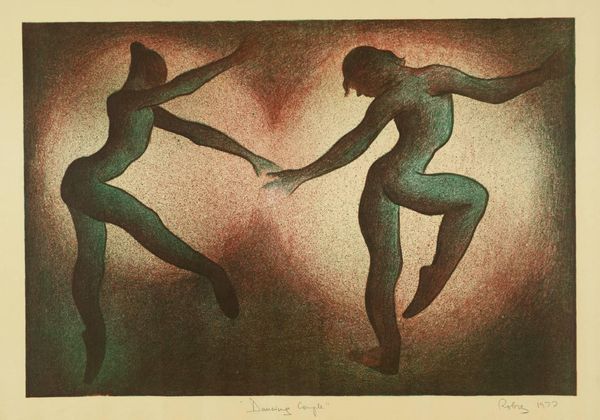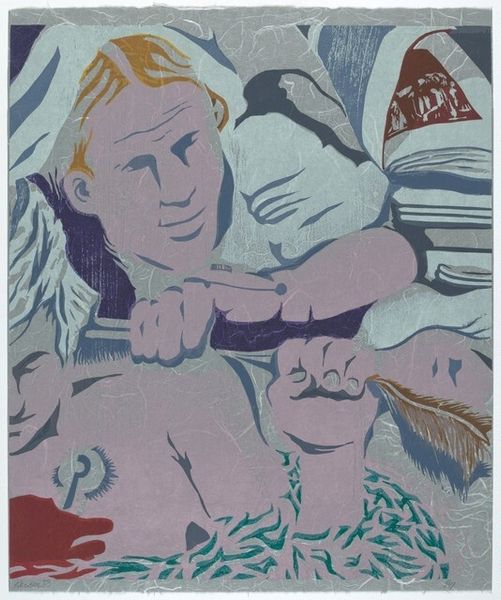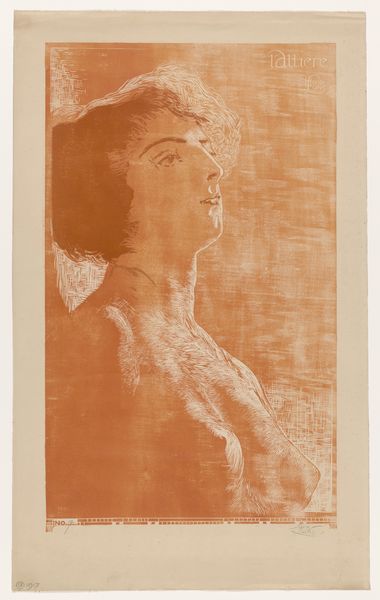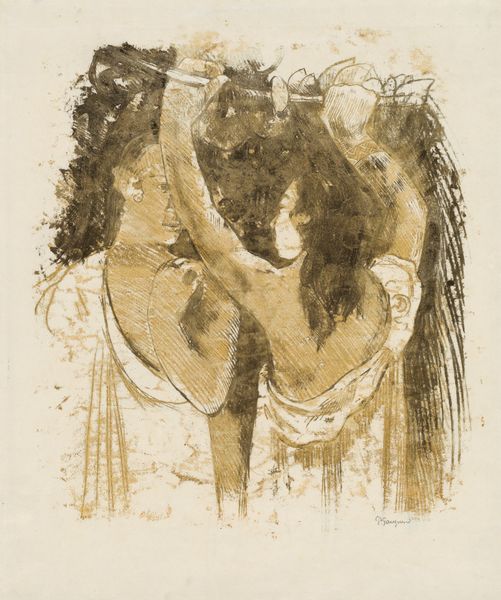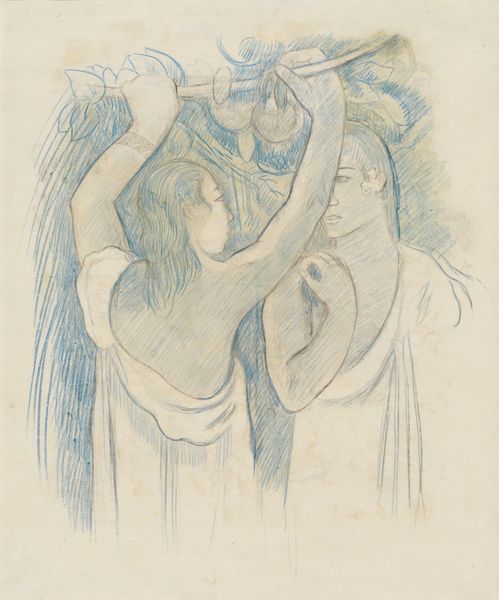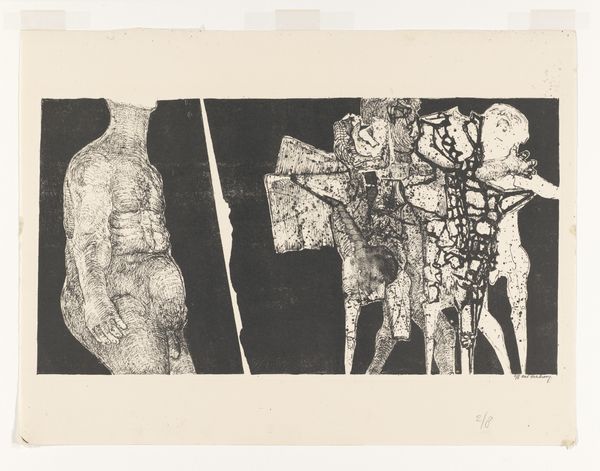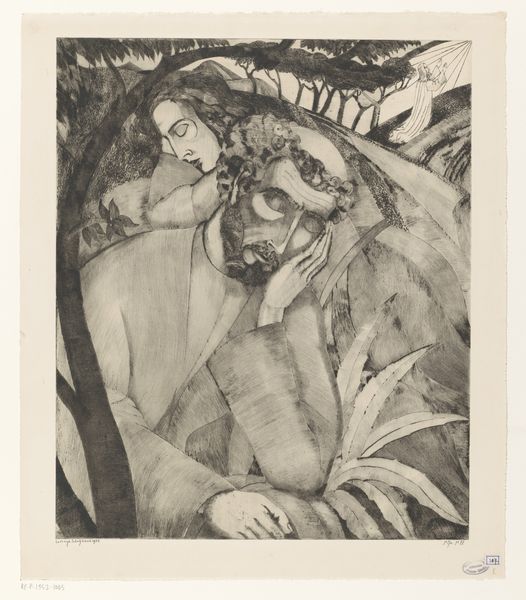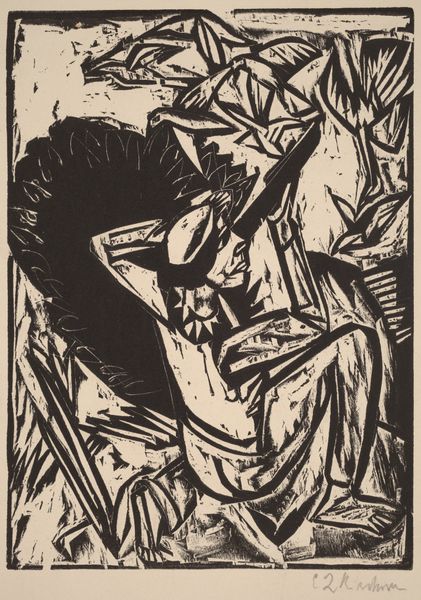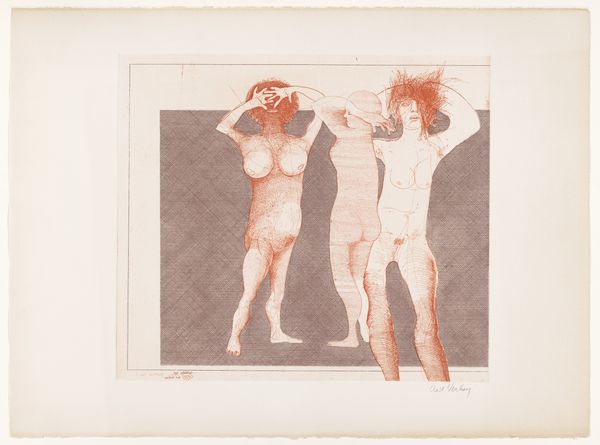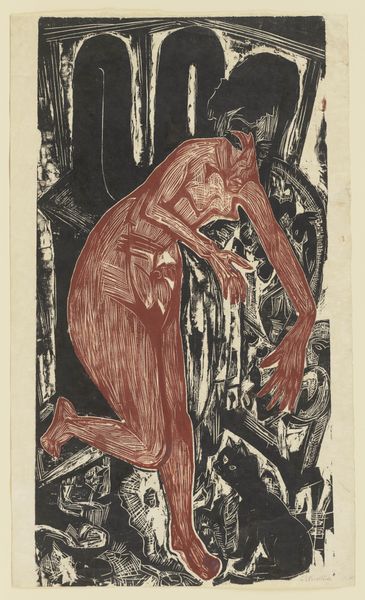
drawing, print
#
portrait
#
drawing
#
art-nouveau
# print
#
symbolism
#
portrait art
#
watercolor
Dimensions: Sheet: 12 in. × 16 1/16 in. (30.5 × 40.8 cm) Plate: 10 1/16 × 15 1/16 in. (25.6 × 38.3 cm)
Copyright: Public Domain
Henri-Jules-Ferdinand Bellery-Desfontaines made "Enigma" using lithography, a printmaking process that allows for nuanced tonal variations. The artwork's material presence is defined by the smooth surface of the paper and the subtle layering of ink. Lithography relies on the contrast between treated and untreated areas of a stone or metal plate, allowing the artist to create a wide range of marks and textures. It would have involved a laborious process of drawing, etching, and printing to achieve the final image. The technique emerged during the industrial revolution, providing a means for mass production and dissemination of images. Bellery-Desfontaines was deeply embedded in the Art Nouveau movement, which embraced both fine art and commercial design. His choice of lithography reflects a desire to bridge these two worlds, challenging the traditional hierarchy between them. The artist skillfully uses the materials of industry to create a work that is both aesthetically refined and culturally relevant. Ultimately, by considering the materials, making, and social context of "Enigma", we can appreciate its place within the history of both fine art and print culture.
Comments
No comments
Be the first to comment and join the conversation on the ultimate creative platform.

